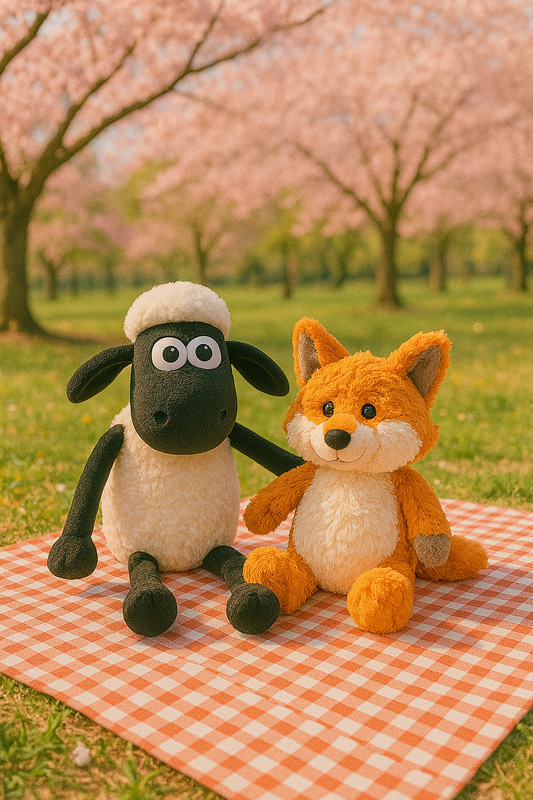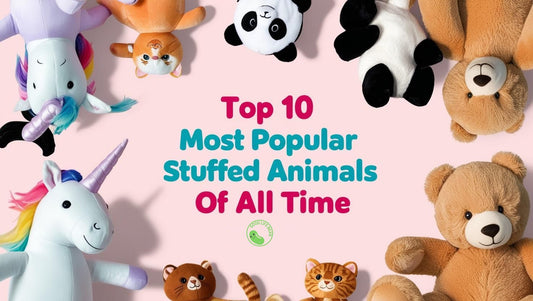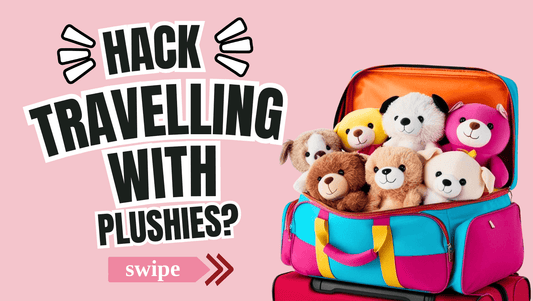Plushies for Infants
As parents, we constantly seek ways to provide comfort and security to our little ones. One common item that comes to mind is a stuffed animal, a soft and cuddly companion that many children grow up with. However, when it comes to introducing a stuffed animal into your baby's sleep environment, it's essential to prioritize safety. So, when can babies safely sleep with a stuffed animal? Let’s explore the guidelines and benefits of allowing stuffed animals in your baby’s crib.
Understanding the Risks
First and foremost, it’s crucial to understand the potential risks associated with introducing a stuffed animal to a baby’s sleeping area too early. The American Academy of Pediatrics (AAP) strongly advises against placing any soft objects, including stuffed animals, in the crib with a baby younger than 12 months. The primary reason is to reduce the risk of Sudden Infant Death Syndrome (SIDS) and accidental suffocation.
Safe Age for Stuffed Animals
12 Months and Older: Once your baby reaches their first birthday, it is generally considered safe to introduce a stuffed animal to their crib. By this age, most babies have developed better motor skills and are less likely to become entangled in soft objects or have difficulty breathing if a stuffed animal covers their face. However, it’s still essential to choose an appropriate stuffed animal that meets safety standards.
Choosing the Right Stuffed Animal
When selecting a stuffed animal for your baby, consider the following factors:
1. Size and Shape:
Opt for a small to medium-sized stuffed animal that is easy for your baby to handle and snuggle with.- Avoid oversized plushies that could pose a suffocation risk.
2. Materials:
Choose stuffed animals made from hypoallergenic and non-toxic materials.- Ensure that the plushie is free from small parts or buttons that could become choking hazards.
3. Washability:
Benefits of Sleeping with a Stuffed Animal
Allowing your baby to sleep with a stuffed animal after the appropriate age can offer several benefits:
Comfort and Security: Stuffed animals can provide a sense of comfort and security, helping babies self-soothe and feel less anxious during bedtime or naps.
Emotional Support: As your child grows, their stuffed animal can become a beloved companion, offering emotional support during challenging times.
Transition Object: Stuffed animals often serve as transition objects that help children cope with separations, such as starting daycare or transitioning to a toddler bed.
Tips for Introducing a Stuffed Animal
To ensure a smooth introduction of a stuffed animal into your baby's sleep routine, consider these tips:
Gradual Introduction: Introduce the stuffed animal during playtime and gradually incorporate it into the bedtime routine, allowing your baby to become familiar and attached to it.
Consistent Routine: Establish a consistent bedtime routine that includes the stuffed animal, reinforcing a sense of security and comfort.
Supervision: Initially, monitor your baby while they sleep with the stuffed animal to ensure they can move it away from their face if necessary.
When to Avoid Stuffed Animals
While stuffed animals can be beneficial for most children, there are situations where it’s best to avoid them:
Allergies: If your baby has allergies, choose hypoallergenic stuffed animals and wash them regularly to minimize allergens.
Overcrowded Crib: Avoid overcrowding the crib with multiple stuffed animals or toys, as this can increase the risk of suffocation and make it harder for your baby to move around safely.
Conclusion
In conclusion, while stuffed animals can provide comfort and security to children, it's crucial to follow safety guidelines and introduce them at the appropriate age. For babies under 12 months, it’s best to keep the crib free from any soft objects, including stuffed animals. Once your baby turns one, you can safely introduce a small, hypoallergenic stuffed animal that meets safety standards. By doing so, you can create a cozy and secure sleep environment that helps your little one feel comforted and loved.
FAQs
Q: Can my baby sleep with a stuffed animal before 12 months? A: No, it is not recommended to place any soft objects, including stuffed animals, in the crib with a baby younger than 12 months to reduce the risk of SIDS and suffocation.
Q: What kind of stuffed animal is safe for a one-year-old? A: Choose a small to medium-sized stuffed animal made from hypoallergenic, non-toxic materials, and free from small parts or buttons.
Q: How can I introduce a stuffed animal to my baby’s bedtime routine? A: Gradually introduce the stuffed animal during playtime and incorporate it into the bedtime routine. Monitor your baby initially to ensure they can safely move the plushie away from their face if necessary.
Q: Can stuffed animals help with my child’s anxiety? A: Yes, stuffed animals can provide comfort, security, and emotional support, helping children cope with anxiety and transitions.















